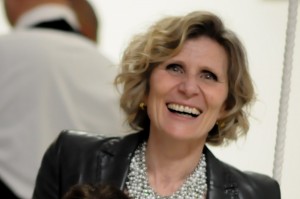
Keeping up with the theme of how the ideal place of care is, we had interviewed the architect Emanuela Valle, co-founder of Studio Valle 3.0 specialized in building healthcare facilities.
In your opinion, how should be the ideal place of care for patients?
Actually, the place where the attention and the respect for patients are tangible things. In this kind of place, each part is aimed to the patient’s condition, to human beings that are living a difficult condition, whether they are outpatients in day-surgery or people in intensive therapy units. The gold standard for the comfort should be considered not only in terms of hotel but also of household hospitality. A particular attention is paid to colours, to panoramas…or examples to the possibility also for lying patients of viewing out through lower windows. Even through balcony if possible. In short, a 360-degrees attention.
And, how should be the ideal place of care for healthcare professionals?
The hospital is a complex building, quite a city, since it has such a variable users. In my opinion, also in the case of professionals, particular attention should be paid to the quality of the space. Quality also given by the possibility of lighting workspaces with the natural light, such as hallways, often actual workspaces, that should be exposed to the outside without any blind wall where only the artificial light is available. And this should be applied also to workplace of concentration, such as places where documents or medicals are prepared. It should be applied also to workplace of concentration, as ones where documents or medicaments were prepared. People should ask themselves how much steps healthcare professionals do every day, so they could realize that pathways should be as short as possible, not only for the speed of intervention.
Finally, how should be the ideal place of care for caregivers, as families?
In this case, we should talk about organizational models, open visits, timetables…etc. We should talk about rooms dedicated to doctor-patients and doctor-caregivers interviews that should not be dimly lit here too. Actually, it is a common idea that when a person receives a bad news, they usually tend to look outwards. So, natural light is the master, but also gardens and the green outside are important.
What it the feasibility today?
Feasibilities and possibilities are everywhere. I don’t see what could impede it, I think it could be applied in many forms and in various ways. For example, the emergency room in the past was always increasingly like a funnel, a bottleneck. Today, it is considered as a door to access in the healthcare facility. We should look at the health homes, whose presence on our territory could solve, in a different way, problems in accessing to health facilities. For examples, though creating points in which services are provided, including basic ones, which people could turn to. It could empty from problems in accessing and in overcrowding the emergency rooms. Also general practitioners are trying to reorganize their medical offices to be open h24, in order to overcome this problems.
Recently, we visited crumbling hospitals placed on the North, the Centred and on the South of Italy. Can something be done to overcome this situation?
Absolutely yes, but on the contrary we must. We should do, whether in accordance with available funds. There are quite unacceptable things. Even speeding up building procedures to prevent a hospital from being open “old”. For this reason, architects are now asked to design flexible hospitals, but we need to deeply understand what level of flexibility they should have. Actually, it is far too long from the allocation of funds to the decision of developing the building, even fifteen years. There is a gap, always too wide, from the project to its realization.
